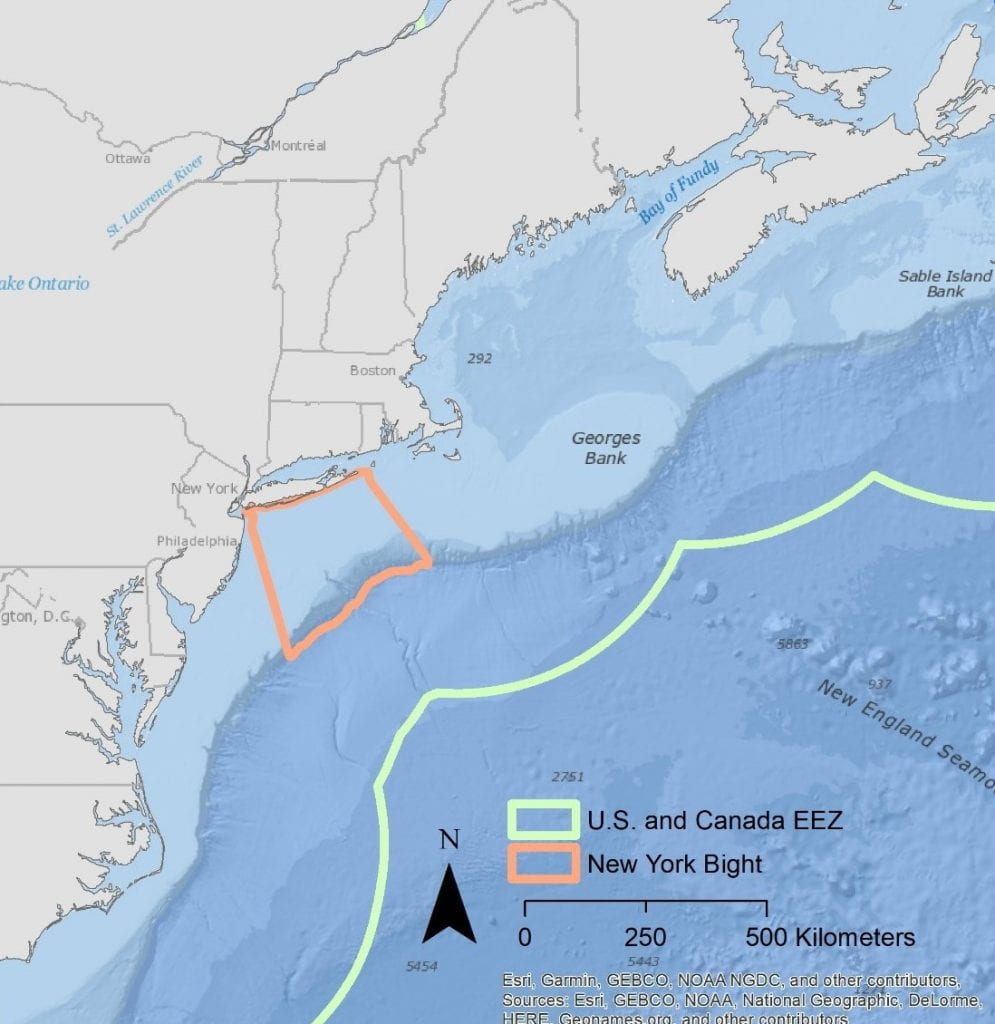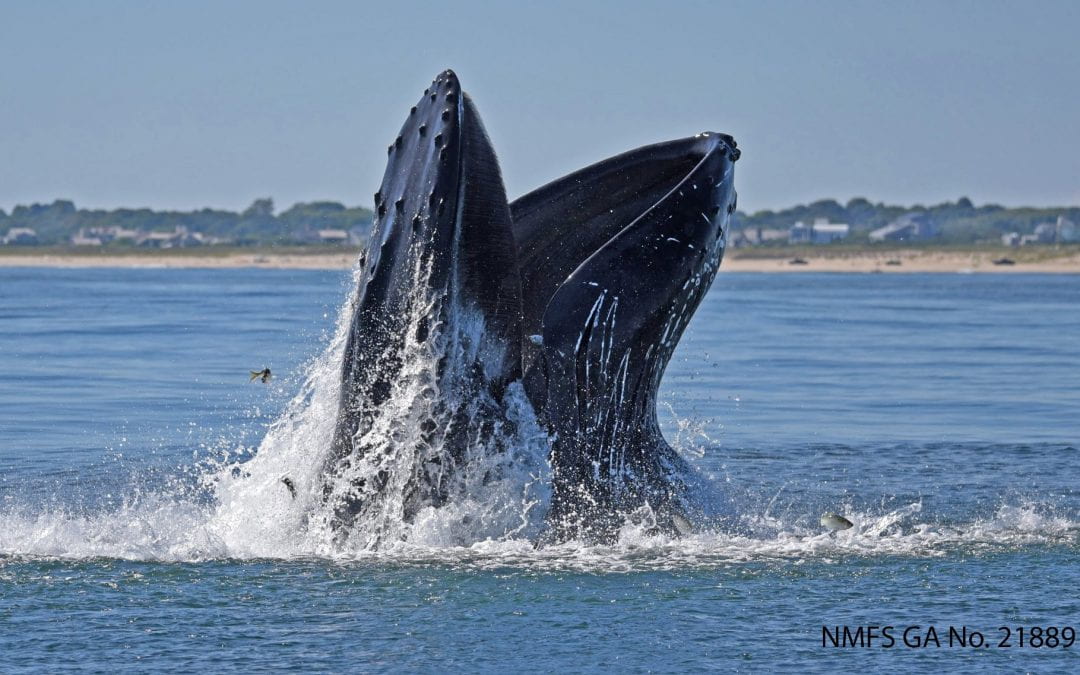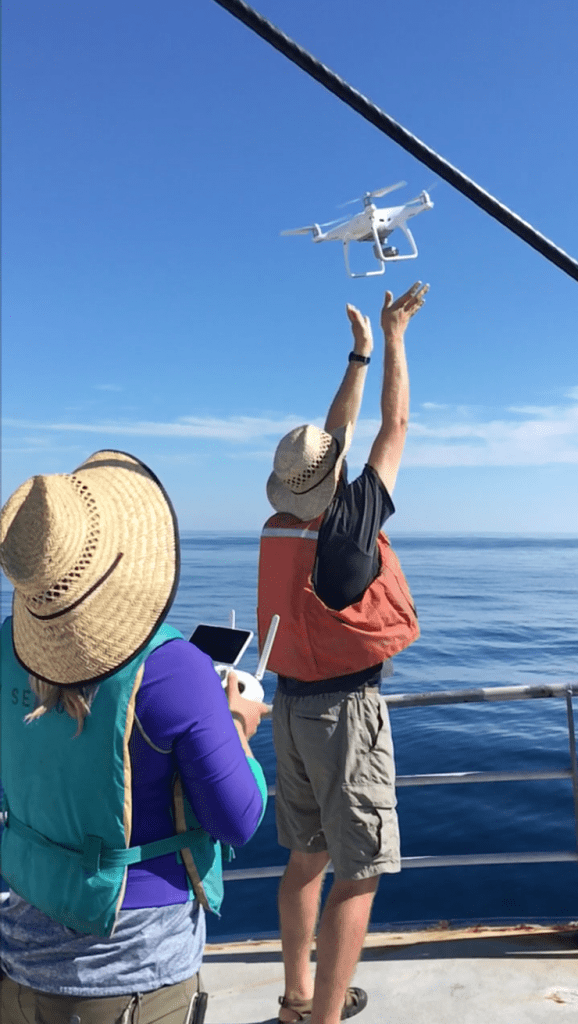We’re excited to announce a new publication from the Thorne Lab in Marine Ecology Progress Series and have summarized the research we did here!
Vessel strikes are a major threat to large whale species around the world, and there have been some reports that juvenile whales (young whales that have not yet reached sexual maturity) are often struck by vessels. Some potential reasons for this could include: 1) young whales haven’t learned to avoid ships; 2) juvenile whales spend lots of time in inshore waters where there is a lot of dense vessel traffic; 3) juvenile whales spend more time near the surface of the ocean than adults so they might encounter ships more often. However, there aren’t a lot of studies that have explored whale habitat use (how and when whales occupy certain regions, and the subsequent behaviors they’re performing in that habitat) based on the age class.

The New York Bight, a marine region off the coasts of New York and New Jersey. Map created by J. Stepanuk
The New York Bight encompasses the waters off New Jersey and New York and is home to lots of shipping, recreational and commercial fishing, and is a region of current interest for offshore wind development. Lots of whales inhabit this region, especially in the spring, summer, and fall (check out this site for recent sightings or acoustic detections!), and humpback whales have been sighted close to shore in recent years exhibiting behavior where they lunge out of the water and feed on Atlantic menhaden (also known as pogy and bunker). Humpback whales along the east coast of the U.S. are currently under an Unusual Mortality Event, where an excessive number of whales have died or been seriously injured due to human activities (primarily vessel strikes and entanglements), and it is a legal requirement under the Marine Mammal Protection Act of 1972 that these mortalities are reduced in the future.
We used drones, also known as unoccupied aerial vehicles (UAVs), to measure 50 humpbacks off the south shore of Long Island between 2018 and 2020. We measured each whale length from the UAV imagery and converted it to meters using information about our flight height off the water. We determined whales to be juveniles if they were <= 12m and adults if they were >12m. We then assessed whether they were feeding: either in cooperative groups or as single animals lunging out of the water. We found that both adult and juvenile whales were found far from shore (greater than 10 km or 6.2 miles from shore) but that only juvenile whales were found close to shore. In addition, the surface lunging behavior was only seen close to shore, which suggests that this might be a specific habitat for juvenile whales to feed.
To associate these findings with vessel strike risk, we downloaded vessel traffic data (called Automatic Information Systems, or AIS data) for the region and calculated the density and speed of different types of vessels within that inshore region where juvenile whales were feeding. We found that passenger vessels (for example for-hire fishing vessels and ferries) were traveling at incredibly high speeds through this inshore region (sometimes in excess of 30 knots! That’s 34 mph!). When we think about boats hitting whales, we usually think of large cargo ships, but small fast vessels likely also pose a significant risk for humpback whales, particularly for juveniles in New York waters.
This study is particularly important because humpback whales are already at risk of vessel strike in this region, but changes to traffic in the New York Bight are currently being explored. First, the Coast Guard is assessing current shipping lanes and vessel traffic in the New York Bight and there is a chance that vessel traffic could shift based on their findings. If vessels start moving in inshore waters, there could be a greater risk to juvenile humpback whales. In addition, there is a lot of wind farm exploration underway, and the construction and upkeep of these regions will require increased vessel traffic from nearby ports, through potential juvenile-specific habitat, to the offshore wind regions. To conclude, we assessed the risk to juvenile whales specifically and found that, with all the potential changes underway, it is important to consider the impacts specifically facing juvenile humpback whales in their inshore feeding grounds.

